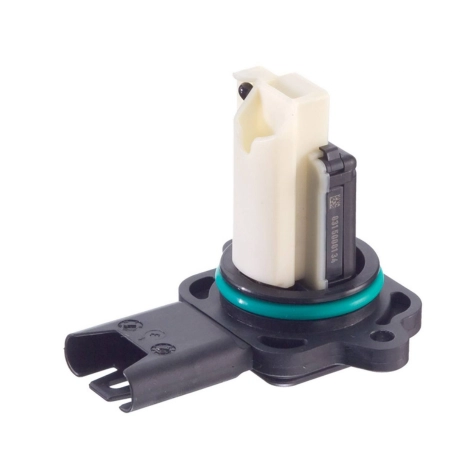Are you experiencing a Check Engine light illuminated on your dashboard, paired with a P0103 diagnostic trouble code (DTC)? This code indicates a higher-than-expected voltage signal from the Mass Air Flow sensor, which is crucial to your vehicle’s performance and efficiency.
The Mass Air Flow (MAF) sensor monitors the air volume entering the engine’s intake manifold, allowing the Engine Control Unit to adjust the air-fuel mixture for optimal performance. When the MAF sensor sends a higher-than-expected voltage signal, it disrupts this balance, leading to potential issues such as engine misfires, stalling, or poor fuel efficiency.
In this blog post, we’ll explore the ins and outs of the P0103 check engine light code, including its causes, symptoms, and solutions. We’ll discuss the role of the MAF sensor, how it works, and guide you through diagnosing and fixing any related issues. Whether you’re a car enthusiast, DIY mechanic, or simply looking to resolve this specific problem, this guide is designed to equip you with the knowledge needed to get your vehicle back on track.
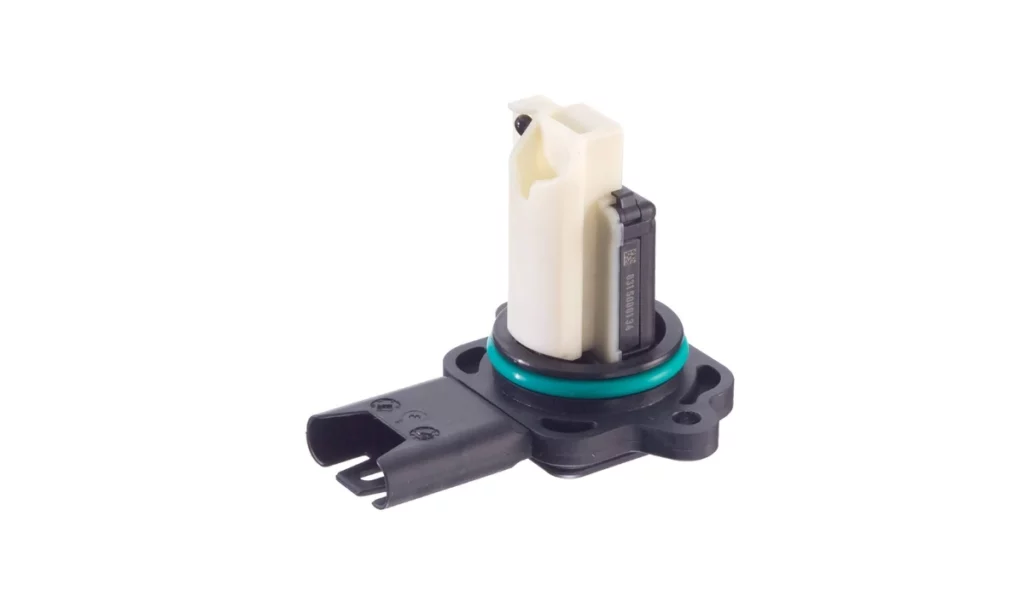
BMW Mass Air Flow (MAF) sensor from Continental
Understanding the MAF Sensor
The Mass Air Flow (MAF) sensor is critical to your vehicle’s intake system. It measures the amount of air entering the engine’s intake manifold and provides this data to the Engine Control Unit (ECU). By accurately tracking the incoming airflow, the MAF sensor plays a vital role in ensuring your vehicle runs smoothly and efficiently.
The MAF sensor’s primary role is to provide real-time airflow data to the ECU. This information allows the ECU to adjust the air-fuel mixture precisely, ensuring optimal combustion. A well-balanced air-fuel mixture improves engine performance, fuel efficiency, and reduced emissions. By constantly monitoring the airflow, the MAF sensor helps maintain the vehicle’s overall performance.
There are two main types of MAF sensors:
Hot Wire — This type of MAF sensor uses a heated wire or filament to measure the airflow. The wire’s resistance changes as air flows over it, causing it to cool down. The sensor then calculates the airflow based on the electrical current needed to maintain the wire’s temperature. Hot wire MAF sensors are known for their accuracy and responsiveness.
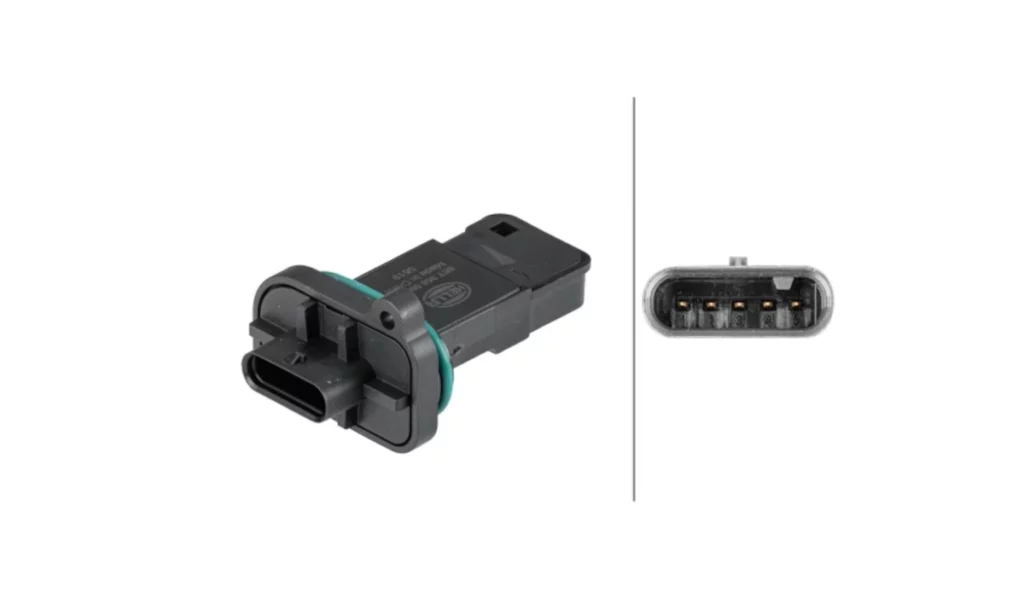
BMW Mass Air Flow (MAF) sensor from Hella
Vane Meter — Also known as a flap-type MAF sensor, this design features a movable vane or flap that is displaced by the incoming airflow. The position of the vane is measured by a potentiometer, which converts its angle into an electrical signal that is sent to the ECU. Vane meters provide reliable airflow readings, though they are less common in modern vehicles compared to hot wire sensors.
Affordable, High-Quality European Car Parts at Your Fingertips
Discover the vast range of genuine European Car parts and OEM parts available at eEuroparts.com. We offer unbeatable deals that simplify car maintenance. We aim to equip every European Car enthusiast with top-notch auto parts, making vehicle upkeep more affordable and accessible. Our curated selection is tailored to meet the specific needs of your European Car, ensuring OEM-level quality in every component.
We offer a variety of parts, including essential engine parts, suspension components, and other accessories, ensuring your European Car remains in top condition. Our focus on affordability means you can maintain or upgrade your vehicle without compromising quality or performance.
By choosing eEuroparts.com, you gain access to remarkable cost savings while maintaining the integrity of your vehicle. This makes it the perfect place for European Car DIY enthusiasts who prioritize excellence and value.
Our comprehensive inventory, user-friendly website, and knowledgeable customer service team make eEuroparts.com a trusted source for all your European Car part needs. Shop with us today and experience the difference!
Symptoms of a Defective MAF Sensor
A malfunctioning Mass Air Flow (MAF) sensor can lead to various issues, affecting your vehicle’s performance and efficiency. Recognizing the signs early can help you address these issues promptly, minimizing damage and preventing costly repairs. Below are the key symptoms to watch for, each of which signals potential problems with the MAF sensor:
Check Engine Light — One of the first indicators of an MAF sensor issue is the Check Engine light illuminated on your dashboard. This warning light, triggered by the P0103 code, signals a higher-than-expected voltage from the MAF sensor to the Engine Control Unit (ECU). It’s a sign that the sensor readings are erratic or faulty, prompting immediate attention to prevent further issues.
Poor Performance — A defective MAF sensor can lead to a cascade of performance problems. Erratic sensor readings disrupt the air-fuel mixture, causing engine misfires, hesitation, and even stalling. This can lead to challenging acceleration and a jittery driving experience.
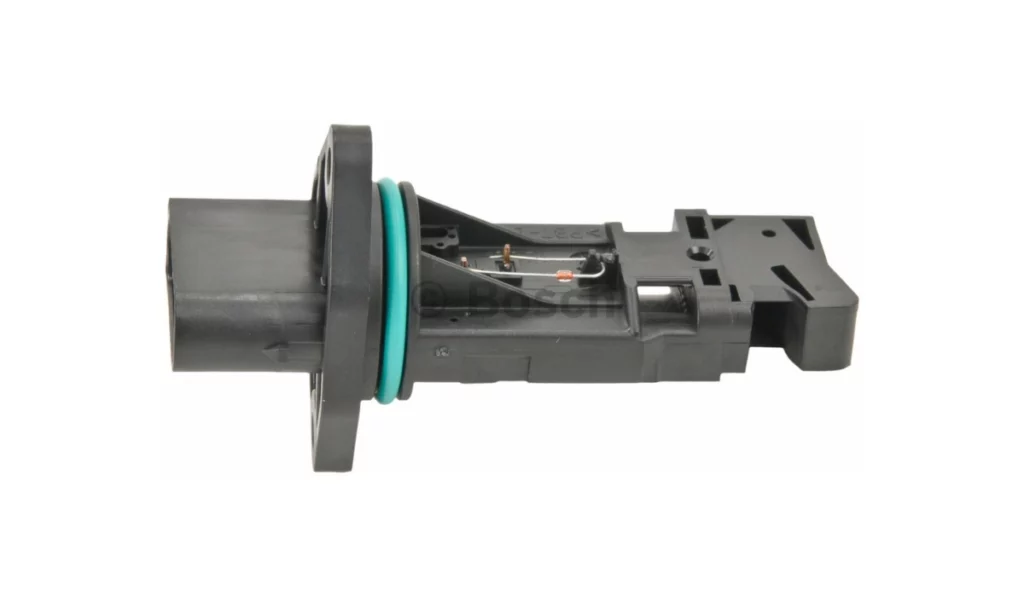
BMW Mass Air Flow (MAF) sensor from Bosch
Poor Emissions — Another sign of a defective MAF sensor is black exhaust smoke billowing out of the tailpipe. This indicates that the air-fuel mixture is too rich, with excess fuel being burned, resulting in increased emissions and potential environmental harm.
Fuel Efficiency — A faulty MAF sensor can significantly impact your vehicle’s efficiency. The disrupted air-fuel mixture can lead to an imbalanced combustion process, causing the engine to burn more fuel than necessary. This results in lower miles per gallon, translating to higher fuel costs.
Can faulty MAF cause transmission problems?
A faulty Mass Air Flow (MAF) sensor can lead to transmission problems. The MAF sensor plays a crucial role in providing real-time airflow data to the Engine Control Unit (ECU), allowing it to adjust the air-fuel mixture accurately. This balance is essential not only for the engine’s performance but also for the transmission’s functionality.
When the MAF sensor malfunctions, it disrupts the ECU’s ability to smoothly manage the engine’s power output. This inconsistency can lead to erratic shifting, delayed gear changes, or transmission slipping. In some cases, a faulty MAF sensor can trigger the transmission to enter a “limp mode,” where it restricts its operation to prevent further damage.
Thus, a defective MAF sensor can indirectly cause the transmission to fail, emphasizing the need to address MAF sensor problems promptly to ensure your vehicle’s overall performance and longevity.
Causes of P0103 Code
The P0103 code signals a high voltage issue from the Mass Air Flow (MAF) sensor, which can stem from several underlying causes:
Sensor Malfunction — An internal failure within the MAF sensor can lead to higher-than-expected voltage signal readings. This malfunction may result from worn-out components, manufacturing defects, or general wear and tear over time, disrupting the sensor’s ability to function properly.
Short to Positive — The P0103 code can also indicate a short-to-positive issue in the MAF sensor’s wiring to the Engine Control Unit (ECU). This means the sensor’s wiring has come into contact with a positive voltage source, resulting in an unexpectedly high voltage reading that triggers the P0103 code.
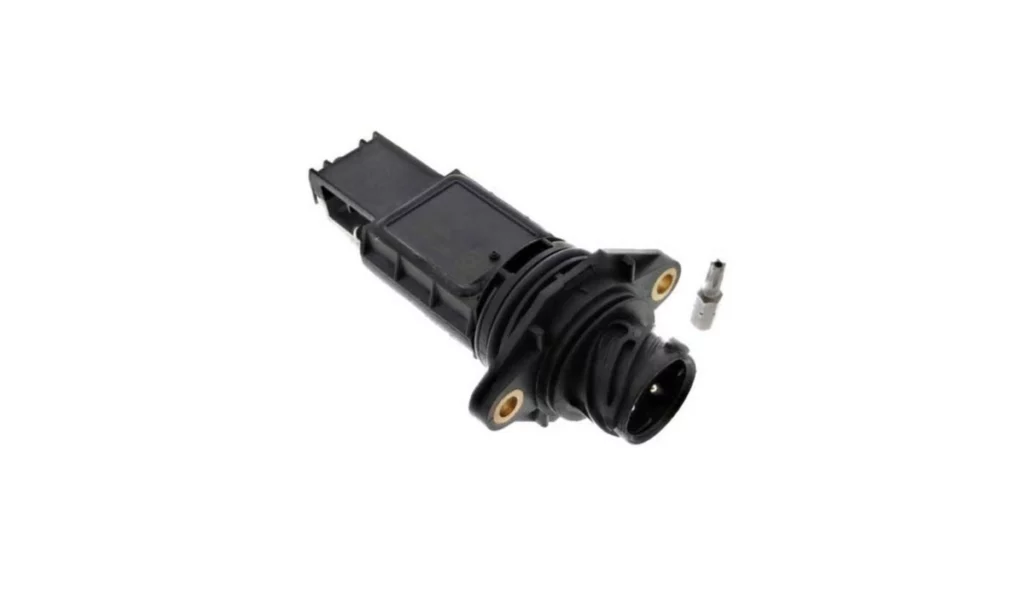
BMW Mass Air Flow (MAF) sensor from Pierburg
Wiring Issues — Common wiring issues, such as shorts, damaged connectors, and corroded contacts, can lead to erratic MAF sensor readings. These issues interfere with transmitting accurate airflow data to the ECU, causing inconsistent performance and potential error codes.
Environmental Factors — External factors, such as dirt, debris, and contaminants, can interfere with the MAF sensor’s functionality. These contaminants can accumulate on the sensor’s elements, jamming airflow measurements and leading to inaccurate readings or higher-than-expected voltage signals.
Diagnosing and Replacing the MAF Sensor
A faulty Mass Air Flow (MAF) sensor can lead to various performance issues, including triggering the P0103 code. Proper diagnosis and replacement can help restore your vehicle’s performance and prevent further problems. Below is a guide to help you effectively diagnose and replace the MAF sensor, ensuring accurate airflow data for the Engine Control Unit (ECU):
Use your Diagnostic Tools
The first step in diagnosing MAF sensor issues involves using an OBD-II scanner to read error codes and check live data. This allows you to confirm the P0103 code and monitor real-time airflow readings, helping you assess the sensor’s functionality. A multimeter can also measure the sensor’s voltage output, cross-checking it against manufacturer specifications to identify discrepancies.
Additional tip: When reading fault codes, note what was present and not just focus on the P0103 DTC. This can help you get a broader view of what could be wrong and help you diagnose the P0103 code effectively.
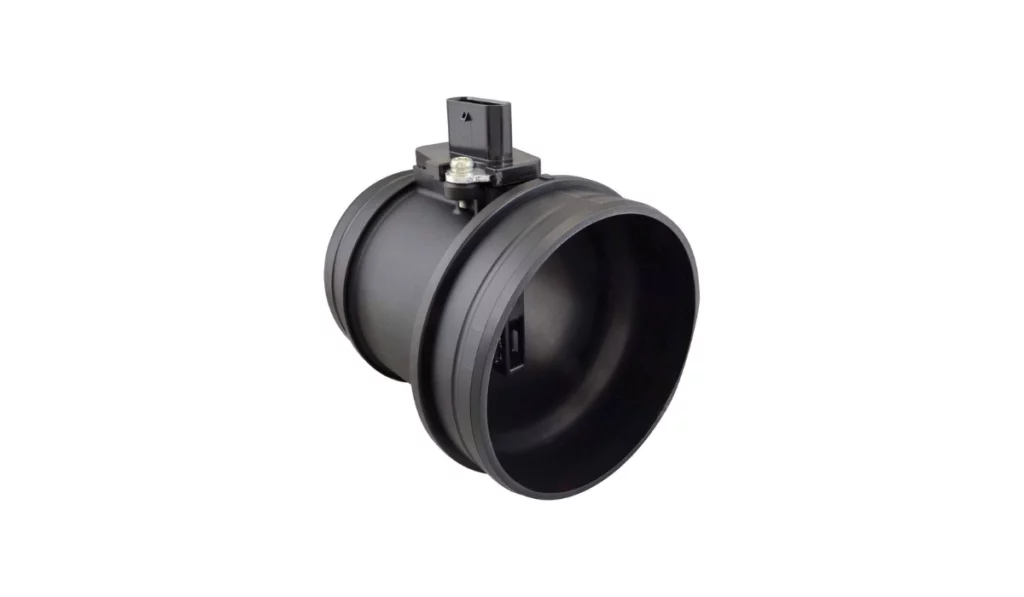
Porsche Mass Air Flow (MAF) sensor from Hitachi
Visual Inspection
Beyond diagnostics, visually inspecting the MAF sensor and its connections is essential. Check the wiring to ensure all connections are secure, intact, and corrosion-free. Additionally, the MAF sensor must be removed to inspect its internal components. Ensure the hot wire or vane is clean and undamaged, as dirt, debris, or a snapped wire can lead to faulty readings.
If diagnostics and inspection indicate the need for a new MAF sensor, follow these steps:
Safety Practices
Disconnect the Battery — Before beginning any work on the vehicle, always disconnect the battery to prevent any electrical mishaps.
Allow the Engine to Cool Down — Working on the engine while still hot can cause burns. Allow sufficient time for the engine to cool down before starting the replacement.
Use Safety Gear — Wear appropriate safety gear, such as gloves and safety goggles, to protect yourself from harmful chemicals or debris.
Work in a Well-Ventilated Area — If you’re working indoors, ensure proper ventilation to avoid inhaling harmful fumes. Carbon monoxide poisoning is a risk when working in enclosed spaces.
Handle Parts Carefully — MAF sensors are delicate electronic components. Handle them with care to avoid damage.
Tools Required
- Gloves
- Safety goggles
- Ratchet and socket set
- Screwdriver set
- Pliers set
- Flashlight
- OBD-II scanner
Mass Air Flow Replacement Guide
Step 1 — Prepare the Vehicle
Before starting the replacement process, it’s essential to ensure the vehicle is parked on a flat surface with the parking brake engaged.
Step 2 — Locate the MAF Sensor
Identify the location of the MAF sensor by consulting the vehicle’s repair manual. Typically, it can be found in the air intake system near the air filter box or mounted directly on the air intake tube.
Step 3 — Inspect Surrounding Components
Before proceeding with the replacement, visually inspect the area around the MAF sensor for any obstacles or components that may obstruct access. Clearing the area beforehand will make the replacement process smoother.
Step 4 — Remove Air Intake Components (if necessary)
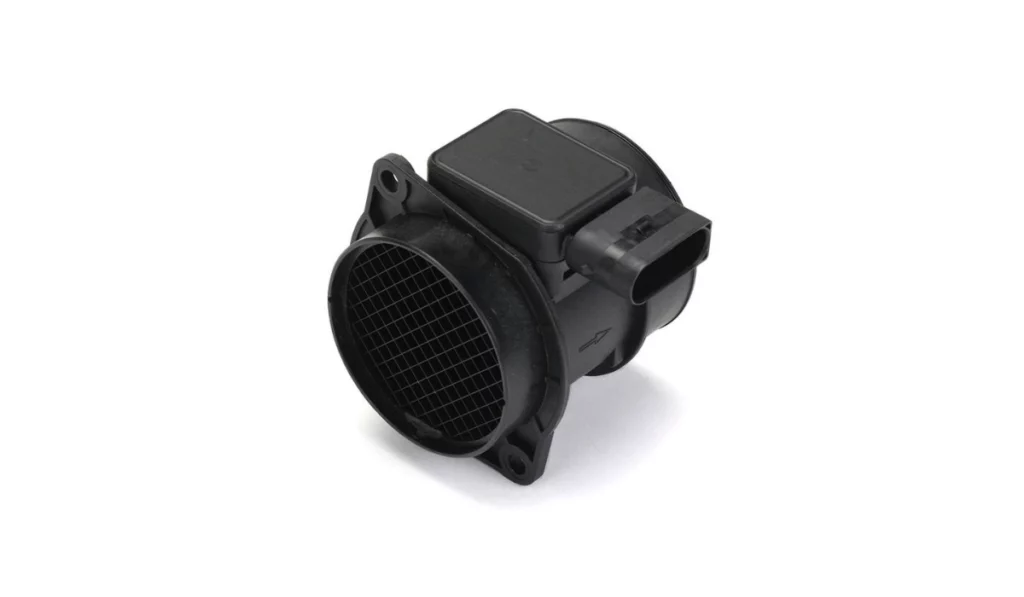
Genuine Mercedes-Benz Mass Air Flow (MAF) sensor
Depending on the vehicle’s configuration, removing air intake components such as the air filter housing or intake duct may be required to access the MAF sensor. Carefully remove these components to avoid damage.
Step 5 — Disconnect Electrical Connector and Remove Mounting Hardware
With caution, disconnect the electrical connector attached to the MAF sensor. Simultaneously, use appropriate tools to remove any mounting screws, bolts, or clamps securing the MAF sensor in place. Keep track of these fasteners to ensure they can be reinstalled correctly later.
Step 6 — Remove the Old MAF Sensor
Gently maneuver the old MAF sensor to remove it from its housing or mounting location. Do not force it, as excessive pressure could damage it.
Step 7 — Install the New MAF Sensor and Reconnect the Electrical Connector
Carefully position the new MAF sensor with a new seal, aligning it with the mounting holes or brackets. Secure the new sensor using the previously removed mounting screws, bolts, or clamps, ensuring they are tightened to the manufacturer’s specifications. Once the sensor is installed, reconnect the electrical connector to the new MAF sensor until it audibly clicks into place, indicating a secure connection.
Step 8 — Reinstall Air Intake Components (if removed)
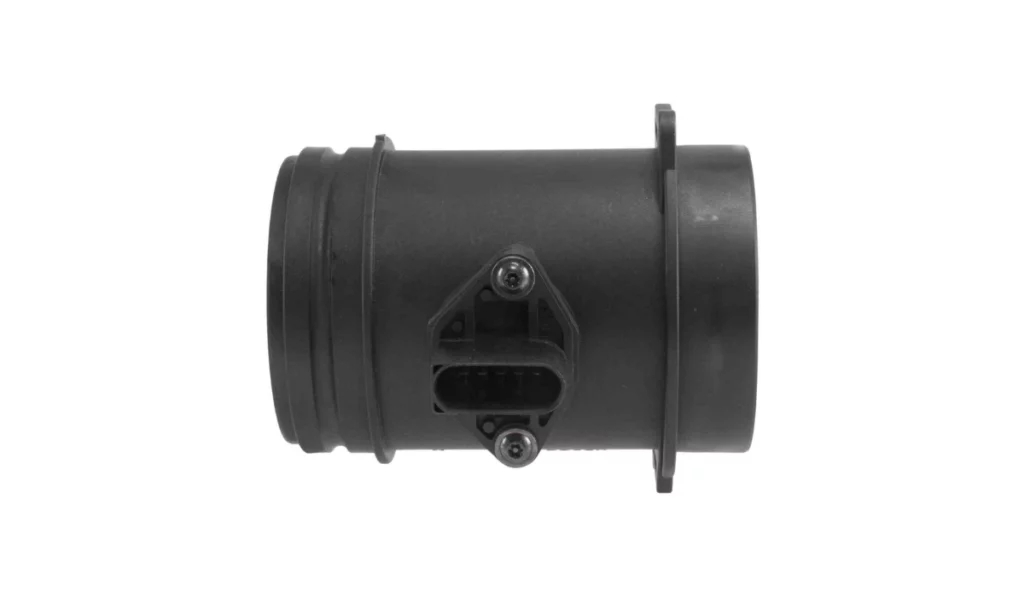
BMW, Land Rover, and Volvo Mass Air Flow (MAF) sensor from NTK
If any air intake components were removed earlier, reinstall them securely in their original positions to restore the system’s integrity.
Step 9 — Reconnect the Battery
Reconnect the negative terminal of the vehicle’s battery and tighten it securely using the appropriate tool.
Step 10 — Calibration Procedure
A calibration procedure may be necessary after installing the new MAF sensor. This can vary depending on the vehicle’s make and model. Consult the vehicle’s service manual or manufacturer guidelines for specific calibration steps. Typically, this involves using an OBD-II scanner to reset the vehicle’s Engine Control Module (ECM) or following a series of steps to ensure proper sensor function.
Step 11 — Test the Vehicle
Start the engine and allow it to idle for a few moments to ensure proper operation of the new MAF sensor. Take the vehicle for a test drive, monitoring for any warning lights on the dashboard and addressing any issues that may arise.
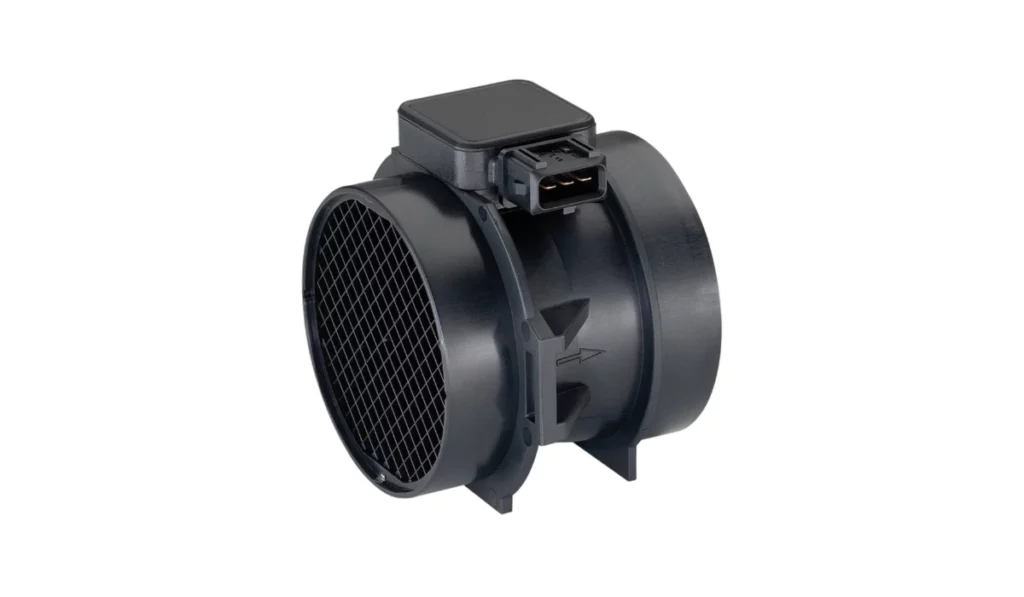
BMW Mass Air Flow (MAF) sensor from VDO
How to reset MAF sensor?
The most reliable way to reset a Mass Air Flow (MAF) sensor after replacement is by using an OBD-II diagnostics tool. Connect the scanner to your vehicle’s diagnostic port and navigate to the option to clear or reset error codes. This clears the P0103 code, allowing the Engine Control Unit (ECU) to recalibrate and accept new readings from the new MAF sensor.
Additionally, completing a drive cycle can help recalibrate the ECU and reset the MAF sensor. This involves driving the vehicle through a series of speeds and driving conditions, allowing the ECU to adjust to the sensor’s new readings.
Another option is disconnecting the battery for 15 to 30 minutes, clearing any stored error codes. This forces the ECU to recalibrate upon reconnection and accept new data from the MAF sensor.
Maintenance and Prevention
Proper maintenance and preventative measures can significantly extend the life of your Mass Air Flow (MAF) sensor and prevent recurring issues. Here are some tips for implementing to achieve this:
Air Intake Maintenance — The engine air filter should be replaced frequently, following the manufacturer’s instructions. In environments with significant dust or other airborne particles, consider replacing it even earlier to ensure clean air flows through the intake system, preventing contaminants from reaching and damaging the MAF sensor.
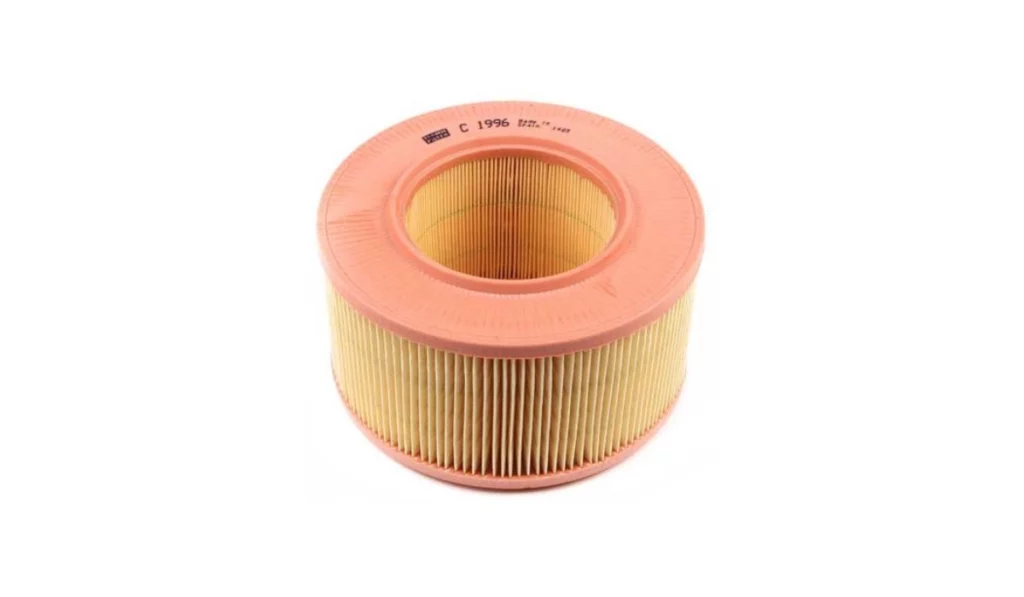
Wiring Checks — Periodic checks for wiring integrity are crucial to prevent shorts or damaged connections. Ensure all connectors are secure and corrosion-free, and address any visible damage promptly to avoid erratic sensor readings or malfunctions.
Routine Inspections — Regular vehicle inspections can help catch potential issues early, preventing costly repairs. Make inspections a part of your vehicle’s maintenance routine, focusing on the air intake system, wiring, and other key components.
Cleaning — Regular MAF sensor cleaning is essential to avoid buildup that can interfere with accurate airflow measurements. Use a designated cleaner specifically designed for MAF sensors, avoiding any cleaners that may damage its components.
What fluid is used to clean the MAF sensor?
A dedicated mass air flow (MAF) sensor cleaner is the most appropriate fluid for cleaning it. This specialized cleaner, formulated for automotive use, effectively removes dirt, oil, and other contaminants without damaging the sensor’s sensitive components.
Alternatively, isopropyl alcohol can dissolve dirt and grime from the MAF sensor’s hot wire or vane. Although not as specialized as an MAF cleaner, isopropyl alcohol offers a cost-effective and readily available solution. However, caution is advised when using it to prevent damage to the sensor’s delicate parts.
Choose eEuroparts.com for Your Next MAF sensor DIY Project!
Finding the right parts is crucial when maintaining and repairing your vehicle. For your next Mass Air Flow (MAF) sensor DIY project, look no further than eEuroparts.com. Offering a wide selection of high-quality MAF sensors and other automotive components, eEuroparts.com is a reliable source for all your repair needs.
With our commitment to quality, you can be confident that their parts will help restore your vehicle’s performance and ensure its longevity. Visit eEuroparts.com for your MAF sensor replacement and other automotive repairs, securing trustworthy parts for your DIY endeavors.
What are you waiting for? Shop with us now!

